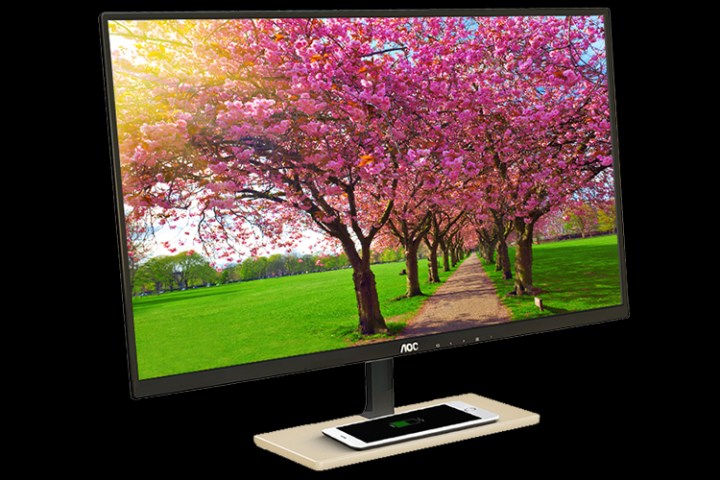
The second factor is the panel’s use of Plane to Line Switching (PLS) technology. As of late, we mostly see panels based on Twisted Nematic (TN), In-Plane Switching (IPS), and IGZO-based technologies. TN is the oldest of the bunch and is best known for its high brightness and fast response times. IPS is newer and has better colors and viewing angles. IGZO is unique in that it only refreshes the screen when there is a change.
PLS technology is the newest of the four, developed by Samsung and first used in the Galaxy Tab 10.1 tablet. It’s very similar to IPS technology, but according to Samsung, PLS has better viewing angles, a better image quality, and an increased brightness. The tech enables manufacturers to create flexible panels, too, while seeing a reduced production cost of around 15 percent compared to using IPS technology.
“A PLS panel has true 8-bit color depth that results in incredible color accuracy,” AOC states. “The screen itself has a matte anti-glare coating that won’t leave fingerprints or smudges. PLS is perfect for graphic designing, video editing, photo retouching, among others. You can also view your spreadsheets or weekend movies from virtually any angle without compromising color uniformity.”
Here are the actual hardware details:
| Viewable screen size: | 27 inches |
| Maximum resolution: | 1,920 x 1,080 @ 60Hz |
| Aspect ratio: | 16:9 |
| Contrast ratio: | 20,000,000:1 (dynamic) |
| Brightness: | 300 nits |
| Color depth: | 16.7 million colors |
| Viewing angles: | 178 degrees (H) / 178 degrees (V) |
| Response time: | 5 milliseconds (gray to gray) |
| Pixel pitch: | 0.311 (H) mm x 0.311 (V) mm |
| Ports: | 1x VGA 2X HDMI 1.3 |
| Panel type: | PLS |
As the specs show, the panel provides an average resolution and an average brightness seemingly targeting the general consumer. Thus, PC gamers wanting a desktop monitor for their setup may want to look elsewhere. The same holds true for customers wanting extra connectivity like DisplayPort input and USB ports to clean up the wired desktop mess caused by peripherals. Still, the Qi wireless charging aspect is rather neat and highly useful for consumers with a compatible smartphone.
AOC plans to make the P2779VC desktop display available to purchase sometime in December for a mere $250.


